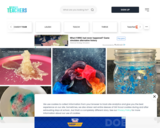
10 Super Simple Science Experiments for Elementary Students
- Subject:
- Physical Science
- Material Type:
- Activity/Lab
- Date Added:
- 02/01/2023

10 Super Simple Science Experiments for Elementary Students
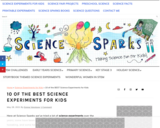
10 of the BEST Science Experiments for Kids
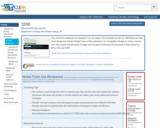
This interactive addresses the question if we can reduce CO2 emissions by 20% of 1990 levels and help avoid dangerous climate change? Users of this interactive can manipulate changes to various sources and uses (supply and demand) of energy with the goal of reducing C02 emissions in Great Britain by 80% in the year 2050.
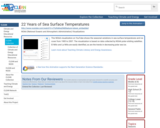
This NOAA visualization on YouTube shows the seasonal variations in sea surface temperatures and ice cover from 1985 to 2007. The visualization is based on data collected by NOAA polar-orbiting satellites. El NiÃo and La NiÃa are easily identified, as are the trends in decreasing polar sea ice.
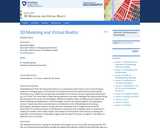
The Geospatial Revolution is going 3D. Immersive technologies such as Oculus Rift, Samsung GearVR, HTC Vive, are revolutionizing how places and data are viewed and analyzed. Instead of interacting with data on a 2D desktop screen, researchers and decision makers can immerse themselves in virtual environments where geospatial data are represented in intuitive, immersive, and flexible ways. VR and 3D modeling are going hand in hand; with the ready availability of massive amounts of environmental data (e.g., LiDAR) and efficient 3D modeling technologies (e.g., SketchUp, CityEngine), realistic immersive scenarios are easier to create than ever before. We are witnessing a paradigm shift which enables new methods of environmental decision making from urban planning to climate change. The combination of iVR and automated 3D modeling enables models of real-world places to be integrated within data visualization workbenches. This course will provide students with an overview of current developments, details different workflows that are available, and provides hands-on experiences with 3D modeling and VR technologies.
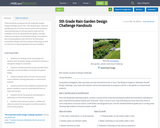
These handouts accompany the 5th Grade Rain Garden Design Challenge Lesson Plan. The handouts give criteria for identifying areas of erosion and non-point source pollution entering waterways on school property, slope and soil suitability criteria for situating the rain garden, and data collection procedures for phosphate testing. The handouts also include guidelines and criteria for the final poster presentation design and Claim-Evidence-Reasoning, as well as rubrics for scoring and guidelines for peer feedback.
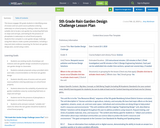
This lesson engages 5th grade students in identifying areas of erosion and non-point source pollution entering waterways on school property, making a claim on the most suitable site to locate a rain garden by conducting field tests on slope and soil type, and testing
for the presence of phosphates in waterways on school forest property. Students then compete in a rain garden design challenge using their data to create a poster presentation, including a map and claim evidence reasoning, for the best rain garden design plan, scored using a rubric.

60 Easy Science Experiments Using Materials You Already Have On Hand
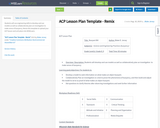
Students will use engineering skills to develop and use models as well as collaboratively plan an investigation to make sense of buoyancy.
Remix this template to upload your ACP lesson and unit plans into WISELearn.
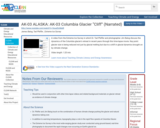
A video from the Extreme Ice Survey in which Dr. Tad Pfeffer and photographer Jim Balog discuss the dynamics of the Columbia glacier's retreat in recent years through this time-lapse movie. Key point: glacier size is being reduced not just by glacial melting but due to a shift in glacial dynamics brought on by climate change.

This is a worksheet on chemical equations and questions pertaining to the chemical equations.
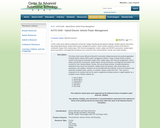
This three credit course offered at Macomb Community College discusses the practical application of hybrid electric vehicle (HEV) power management systems. Areas of study include computer controls of the internal combustion engine (ICE), battery types, HEV thermal management, motors, safety, and HEV/EV accessories. System types, service procedures, and diagnostic procedures are covered for Ford, General Motors, Honda, and Lexus/Toyota vehicles. Included educational materials for this course are homework, sample exams and quizzes, labs, lesson plans, pre-assessment, and syllabus. Solutions are not provided with any materials. If you're an instructor and would like complete exams, quizzes, or solutions, please contact theCAAT. This course is composed of six modules that can be used to supplement existing courses or taught together as a complete course. These modules are Intro to HEVs,Honda HEVs, Toyota HEVs,Ford HEVs, GM HEVs, and Fuel Cells
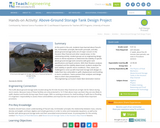
At this point in the unit, students have learned about Pascal's law, Archimedes' principle, Bernoulli's principle, and why above-ground storage tanks are of major concern in the Houston Ship Channel and other coastal areas. In this culminating activity, student groups act as engineering design teams to derive equations to determine the stability of specific above-ground storage tank scenarios with given tank specifications and liquid contents. With their floatation analyses completed and the stability determined, students analyze the tank stability in specific storm conditions. Then, teams are challenged to come up with improved storage tank designs to make them less vulnerable to uplift, displacement and buckling in storm conditions. Teams present their analyses and design ideas in short class presentations.
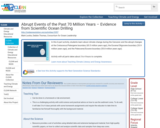
In this 6-part activity, students learn about climate change during the Cenozoic and the abrupt changes at the Cretaceous/Paleogene boundary (65.5 million years ago), the Eocene/Oligocene boundary (33.9 million years ago), and the Paleocene/Eocene boundary (55.8 million years ago).
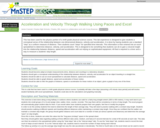
Using students' step length to understand the relationship between distance, speed and acceleration. Includes graphing of data and interpretation of graphs.

Students make a wheel and axle out of cardboard and a wooden dowel. It is rooled along a ramp made of parallel meter sticks, and the acceleration can be made small enough to make accurate measurements and calculations.
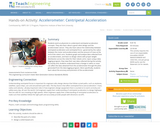
Students work as physicists to understand centripetal acceleration concepts. They also learn about a good robot design and the accelerometer sensor. They also learn about the relationship between centripetal acceleration and centripetal force governed by the radius between the motor and accelerometer and the amount of mass at the end of the robot's arm. Students graph and analyze data collected from an accelerometer, and learn to design robots with proper weight distribution across the robot for their robotic arms. Upon using a data logging program, they view their own data collected during the activity. By activity end , students understand how a change in radius or mass can affect the data obtained from the accelerometer through the plots generated from the data logging program. More specifically, students learn about the accuracy and precision of the accelerometer measurements from numerous trials.
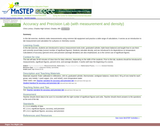
In this lab exercise, students practice correctly using measurement tools, recording data, calculating density, using significant figures, and exploring the concepts of accuracy and precision.
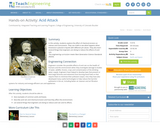
In this activity, students explore the effect of chemical erosion on statues and monuments. They use chalk to see what happens when limestone is placed in liquids with different pH values. They also learn several things that engineers are doing to reduce the effects of acid rain.
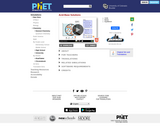
How do strong and weak acids differ? Use lab tools on your computer to find out! Dip the paper or the probe into solution to measure the pH, or put in the electrodes to measure the conductivity. Then see how concentration and strength affect pH. Can a weak acid solution have the same pH as a strong acid solution?